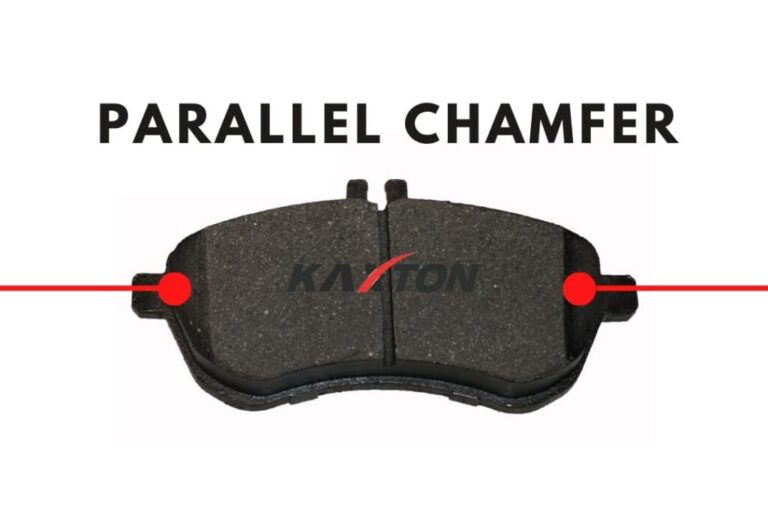
What is a Brake Chamfer?
Once Kaxton Brake Pads have been created and hardened, a chamfer is cut into it. The main purpose of the chamfer is to reduce vibration and noise from the brake pad's leading or trailing edge when it initially contacts the rotor. Furthermore, the taper creates a reduced contact area in the pad's centre, where the most braking pressure is delivered.
There are 3 broad categories of brake chamfers:
1. Parallel Chamfer
From the top of the brake pad to the back plate, there are two parallel chamfers. These are designed to keep high-vibration areas surrounding the brake pad's edges from contacting the rotor and thus, minimizes brake noise and wear & tear.
2. Compound Chamfer
On the disc pad's edges, angled chamfers are constructed with two different angles. Compound chamfers are typically utilized on square shaped pads to maximize rotor contact surface area. Thus, boosts braking performance while also reducing noise from high vibration areas.
3. Radial Chamfer
The radial chamfers are angled in relation to the brake pad's curve. Longer brake pads that follow the curvature of the rotor radius are frequently constructed with radial chamfers. This makes sure that the entire pad is in contact with the brake rotor when applying brakes and at the same time minimizes brake noise.
Kaxton continuously focuses on keeping brake pad’s shapes consistent with the latest technology and application to provide maximum performance and safety.
- Image
- SKU
- Rating
- Price
- Stock
- Availability
- Add to cart
- Description
- Content
- Weight
- Dimensions
- Additional information




8 Comments